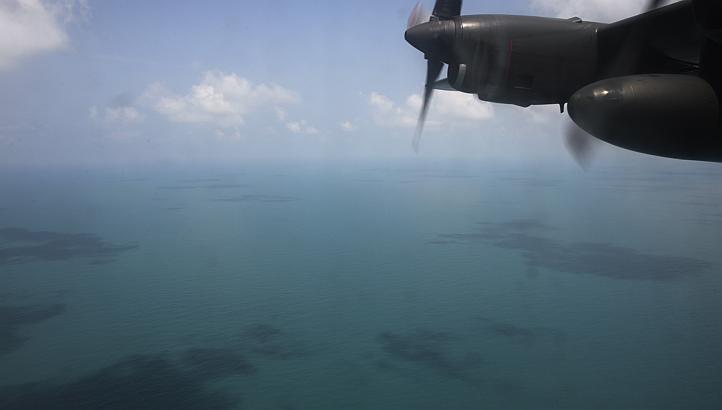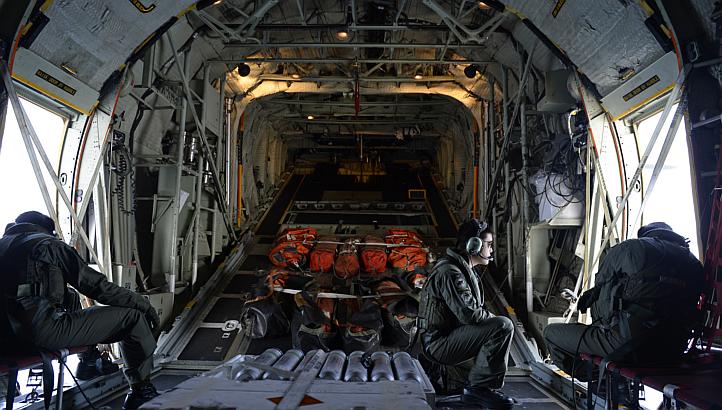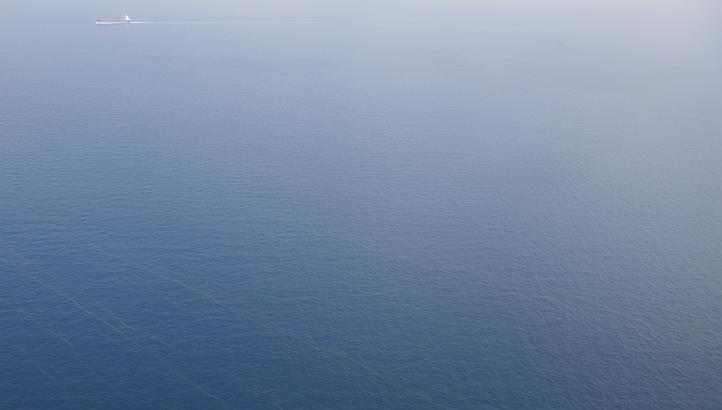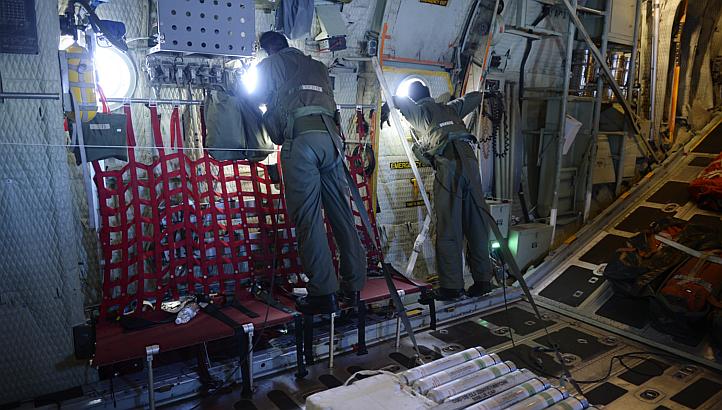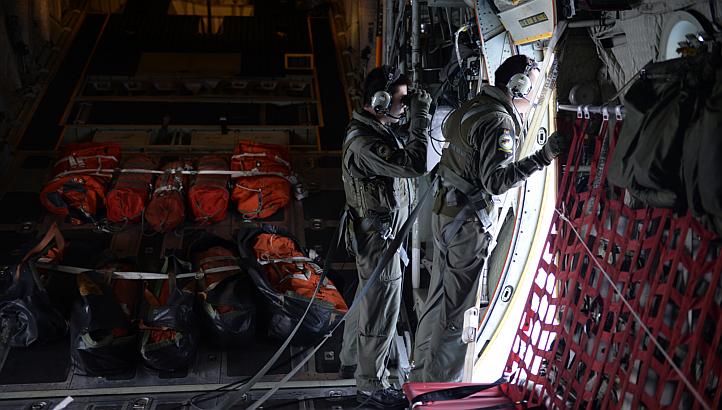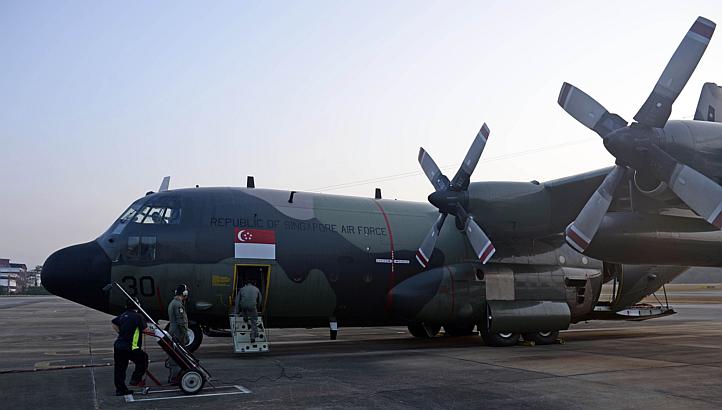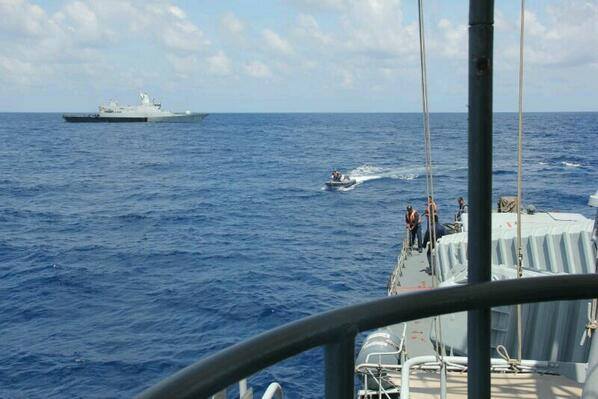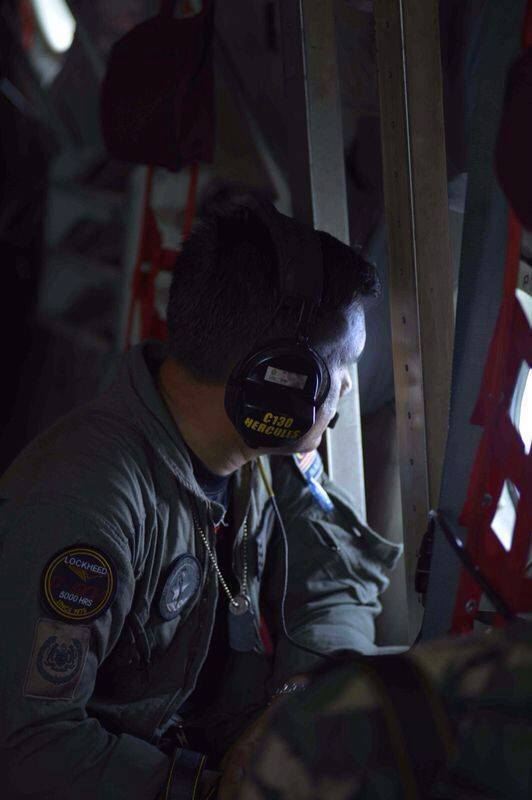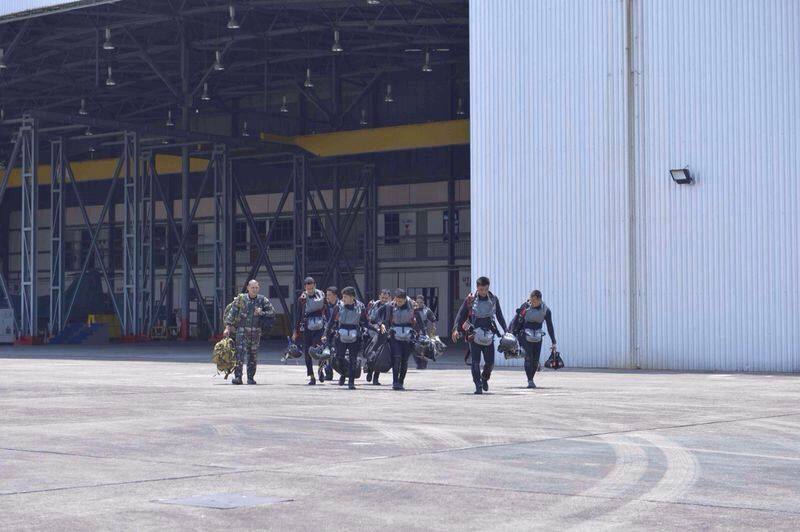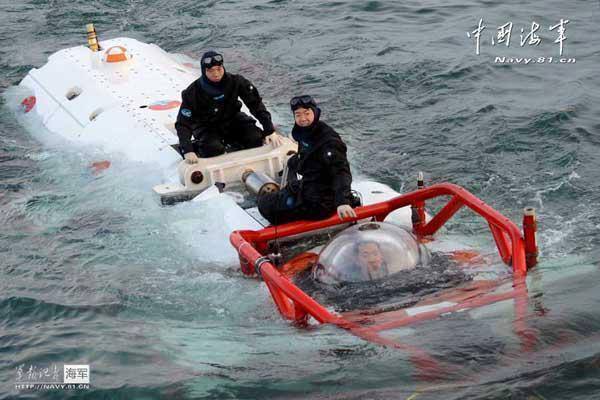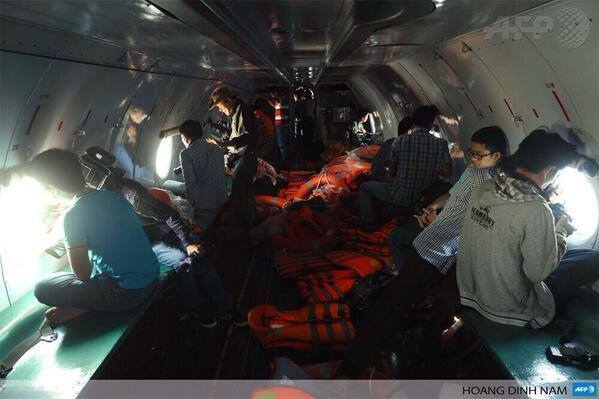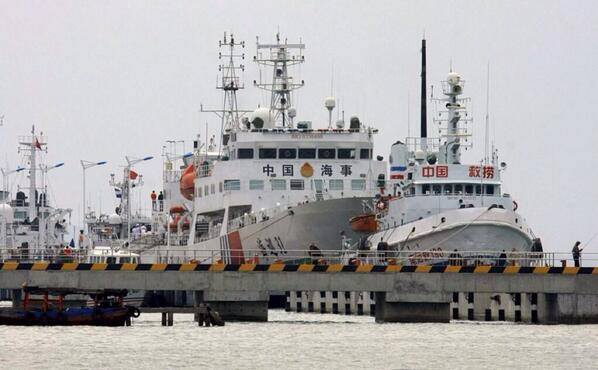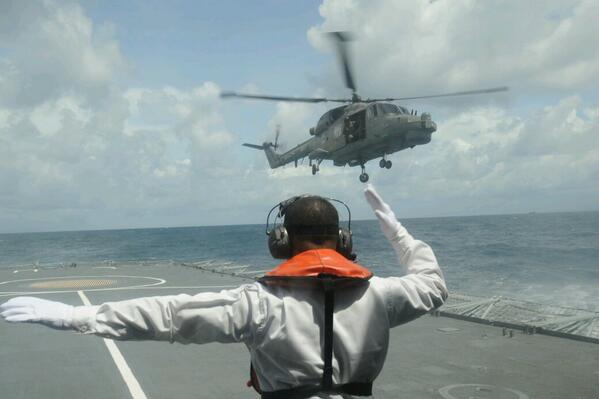Desmond Lim Will Tell You How Difficult A SAR Operation Is After His 9 March Experience
Straits Times photojournalist Desmond Lim joined a search-and-rescue operation and found out first hand how difficult one over open seas can be.
"I had come on board thinking that with a bird's eye view of a suspected crash site, one would definitely be able to spot a floating debris"
An unidentified piece of debris is seen among oil slicks in the seas about 140 nautical miles north-east of Kota Bahru, Kelantan, on March 9, 2014. The RSAF C-130 military transport plane with 18 crew members on board was participating in the search for a Malaysia Airlines plane which went missing on March 8, 2014 over the South China Sea.
Image via Desmond Lim"I was there at the break of dawn on March 9 with 18 crew members from the RSAF 122 Squadron, who were setting out for a 10-hour mission to locate the missing Boeing 777 from Malaysia Airlines (MAS), which went missing in the South China Sea on March 8 while flying from Kuala Lumpur to Beijing."
"How difficult could it be to spot something in the sea?" he asked
The view of the vast South China Sea from a Republic of Singapore Air Force C-130 plane deployed on March 9, 2014 to help in the search for a Malaysia Airlines Boeing 777 that went missing in the area a day earlier.
Image via Desmond Lim"Although the search was concentrated that day in an area about 140 nautical miles north-east of Kota Bahru, Kelantan, in the South China Sea, the crew members in the cockpit went to work right from the start, keeping a lookout in the two hours or so it took for us to reach the South China Sea."
"I would later find out that the task is harder than it seems"
RSAF personnel on board a C-130 scanning the seas about 140 nautical miles north-east of Kota Bahru, Kelantan, for any signs of the missing Malaysian Airlines plane on March 9, 2014. Ten inflatable rafts (orange bundles at the back of the plane) were brought along, ready to be thrown down in case any survivors were spotted in the seas.
Image via Desmond Lim"The mood was solemn, with hardly any words exchanged between the servicemen as they swiftly loaded equipment like smoke markers, inflatable rafts and prepared the 30m-long transportation plane for take-off."
"As we approached the search area, people sprang into action, removing the seat webbings blocking the small windows and taking up positions to get the clearest views. Some stood on seats to peer out of the windows on the higher parts of the plane."
"The vastness of the seas was overwhelming. The area of operation was enormous - many times the size of Singapore and the Malaysian Peninsular combined"
A ship (top left in photo) in the waters of the South China Sea seen from a Republic of Singapore Air Force C-130 plane on March 9, 2014. The vastness of the sea was such that it was often hard to make out whether the boats in the water were search-and-rescue vessels or small traditional fishing boats.
Image via Desmond Lim"I was confident that with so many aircraft and ships from so many countries involved in the search, it would not be long before the ill-fated MH370 was found. But it was not to be."
"The majority of those on board strained their necks, their faces pressed against the basketball-sized windows of the aircraft, scanning the seas and horizon for any sign of debris"
RSAF personnel on board a C-130 looking out of windows of a C-130 RSAF plane, scanning the seas and horizon for any signs of debris or survivors of the missing Malaysia Airlines plane on March 9, 2014. Flight MH370 was travelling from Kuala Lumpur to Beijing when it disappeared from radar screens in the South China Sea.
Image via Desmond Lim"The loud droning and constant vibrations from the jet engines began to take its toll on the servicemen"
RSAF personnel on board a C-130 scanning the waters of the South China Sea for signs of the missing Malaysian Airlines plane on March 9, 2014. Ten inflatable rafts (orange bundles at the back of the plane) were brought along in case any survivors were spotted.
Image via Desmond Lim"The loud droning and constant vibrations from the jet engines began to take its toll on the servicemen, hours into the operation, as they took shifts to scan the waters. Some took a quick shut-eye, and other stepped in to fill the gap."
"Many were visibly tired after a few hours of intense concentration. A servicemen was asked by his partner to take a break, but he waved him off, signing to him with his hands saying: 'Later. Ten more minutes.'"
"Some were seen clutching white vomit bags, apparently nauseous form the constant staring at moving objects and the circling of the plane"
"The crew took turns to have lunch - cup noodles and biscuits. No one seemed to mind the simple meal as they wolfed it down and quickly headed back to their posts, seemingly aware of the urgency and importance of the responsibility on their shoulders. "
"I started to scan the seas, it required tremendous concentration and was extremely tiring"
The view of the South China Sea about 140 nautical miles north-east of Kota Baru, Malaysia, from inside the RSAF C-130 on March 9, 2014. The RSAF deployed the plane on a 10-hour search-and-rescue mission to try to locate the missing Malaysian Airlines flight MH370.
Image via Desmond Lim"I found a window on the right side near the front of the plane and started to scan the seas. It required tremendous concentration and was extremely tiring. I felt exhausted and struggled to keep awake just after 30 minutes."
"Smoke markers were thrown into the seas, at some points, to mark out suspected debris"
" The plane would then swing back to investigate the marked areas, but each time, it yielded no results."
"About eight hours after we took off, the plane turned back for Singapore and landed just in time for us to see the sun setting at the Paya Lebar Air Base at about 6pm."
"My 10-hour journey with the RSAF showed me just how difficult an open-sea search-and-rescue operation really is"
This RSAF C-130 aircraft, with an 18-member crew, spent about 10 hours on a mission to locate the missing Malaysia Airlines plane on March 9.
Image via Desmond Lim"We saw some vessels in the seas, but at about 500 feet (150m) up in the air, we were circling too high up to be able to tell whether they were search-and-rescue boats, or just traditional Vietnamese fishing boats."
More search and rescue efforts in PHOTOS:
'The search and rescue effort for the missing #MH370 in the South China Sea.'
Image via MH370 News Update'China using with her rescue ship an Britain LR-7 rescue submarine to find #MH370'
Image via MH370 News Update'Reporters on a search flight over the southern sea of Vietnam where the MH370 went missing.'
Image via MH370 News Update'China's Haixun 31 ship joins search operations for the missing Malaysia Airlines Flight #MH370'
Image via MH370 News Update
